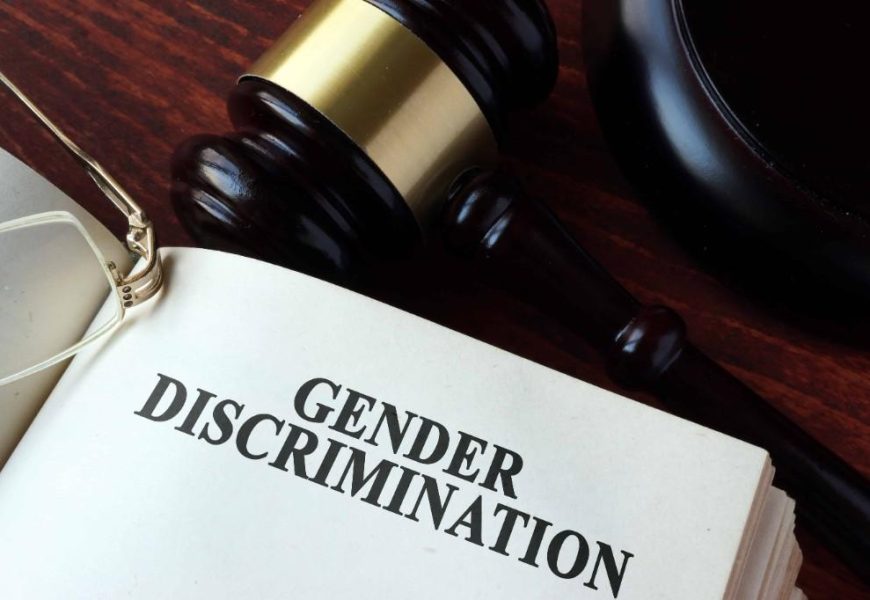Gender discrimination in the workplace remains a significant issue, affecting countless employees across various industries. Proving such discrimination can be challenging, but it is crucial for ensuring justice and equality. This article will provide a comprehensive guide on how to prove gender discrimination in the workplace, focusing on the legal steps that can be taken and the types of evidence that are most effective. For those who suspect they have been victims of gender discrimination, consulting a gender discrimination attorney in Los Angeles can be the first step towards achieving a fair outcome.
Understanding Gender Discrimination
Before delving into the specifics of proving gender discrimination, it is important to understand what constitutes this form of discrimination. Gender discrimination occurs when an employee is treated unfavorably because of their gender. This can manifest in various ways, including unequal pay, denied promotions, biased hiring practices, and hostile work environments. Discrimination can also be subtle, such as when a female employee is consistently overlooked for challenging assignments or leadership roles that are offered to male colleagues.
Recognizing the Signs of Gender Discrimination
Recognizing the signs of gender discrimination is the first step in proving it. Common indicators include:
- Unequal Pay: Women often earn less than their male counterparts for the same job, even when they have similar qualifications and experience.
- Promotional Disparities: If promotions are frequently awarded to men despite women being equally or more qualified, this may indicate discrimination.
- Hostile Work Environment: A workplace that tolerates sexist remarks, jokes, or behavior can create a hostile environment that disproportionately affects women.
- Biased Hiring Practices: If women are consistently passed over for jobs or opportunities that men are given, it may suggest discriminatory practices.
Gathering Evidence of Gender Discrimination
Proving gender discrimination requires strong evidence. There are several types of evidence that can support a discrimination claim:
1. Documentation
Maintaining detailed records is essential. Employees should keep copies of performance reviews, pay stubs, emails, and any other relevant documents that demonstrate disparities in treatment. For instance, if a female employee is consistently rated lower than her male colleagues despite similar performance, this could be evidence of discrimination.
2. Witness Testimonies
Colleagues who have witnessed discriminatory behavior or practices can provide valuable testimonies. These witnesses can corroborate claims of unequal treatment, biased comments, or other discriminatory actions. It is important to gather statements from multiple sources to strengthen the case.
3. Comparative Evidence
Comparing treatment between genders within the same workplace can be powerful evidence. For example, if a male colleague with similar or lesser qualifications is consistently given better opportunities or higher pay, this comparison can highlight discriminatory practices.
4. Statistical Evidence
In some cases, statistical evidence can be used to prove gender discrimination. This might include data showing a significant disparity in pay or promotion rates between male and female employees within the same organization. A gender discrimination attorney in Los Angeles can help in gathering and analyzing such data to build a strong case.
Filing a Gender Discrimination Complaint
Once sufficient evidence has been gathered, the next step is to file a formal complaint. Employees have the option to file a complaint with their company’s human resources department or directly with an external agency like the Equal Employment Opportunity Commission (EEOC).
1. Internal Complaint
Filing an internal complaint with the company’s HR department is often the first step. It is important to follow the company’s specific procedures for reporting discrimination. Employees should submit their evidence and request an investigation. If the company fails to address the issue adequately, further action can be taken.
2. EEOC Complaint
If the internal complaint does not result in a satisfactory resolution, filing a complaint with the EEOC is the next step. The EEOC is a federal agency responsible for enforcing laws against workplace discrimination. After filing the complaint, the EEOC will investigate the claim and determine if there is sufficient evidence to take legal action against the employer.
Legal Action and Court Proceedings
If the EEOC determines that there is evidence of gender discrimination, or if the employee decides to pursue legal action independently, the case may proceed to court. Having a strong legal representation is crucial during this stage. A gender discrimination attorney in Los Angeles can provide the necessary expertise to navigate the complexities of the legal process.
1. Mediation and Settlement
Before the case goes to trial, there may be an opportunity for mediation. Mediation involves a neutral third party who helps both sides reach a settlement. This can be a quicker and less adversarial process compared to a full trial. If a fair settlement is reached, the case can be resolved without further court proceedings.
2. Trial
If mediation fails, the case will proceed to trial. During the trial, both sides will present their evidence and arguments. The court will then decide whether gender discrimination occurred and, if so, what remedies are appropriate. Remedies can include back pay, reinstatement, and compensatory damages.
The Role of a Gender Discrimination Attorney
Navigating a gender discrimination case can be complex and challenging. Having a skilled attorney can make a significant difference in the outcome of the case. A gender discrimination attorney in Los Angeles will have the experience and knowledge needed to effectively represent victims of discrimination. They can assist in gathering evidence, filing complaints, negotiating settlements, and representing clients in court.
Conclusion
Proving gender discrimination in the workplace requires diligence, strong evidence, and often, legal assistance. By recognizing the signs of discrimination, gathering substantial evidence, and following the appropriate legal steps, victims can seek justice and hold employers accountable for discriminatory practices. Consulting with a gender discrimination attorney in Los Angeles can provide the necessary support and expertise to achieve a favorable outcome in such cases.
















